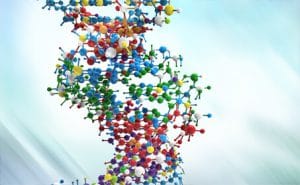How does it work?
The most common question we get is how the treatment is administered. There’s no simple answer to this question, as every person is different, as is their illness, pain, etc. However, we do have experience with stem cell treatment for a very wide variety of things. Below is a video testimonial from one of our patients who was cured of arthritis in the hand. In the video, he describes his treatment, and results. You’ll also see a list of FAQ listed below.
There at two basic types of stem cells, adult stem cells and embryonic stem cells. Embryonic stem cells are the result of fertilization of egg and sperm, then a blastocyst develops or egg. These are used primarily in research and drug development.
Adult stem cells are found in all human tissue in your body. Your heart, brain, skin, blood and even fat have adult stem cells. These cells divide and regenerate new tissue naturally in your body, especially when you are a child. Children have far more stem cells than adults, that is why they heal faster from things like broken bones or cuts and scrapes. Biotech and new research has found a way to harvest, prepare and use these types of adult stem cells to treat many conditions.
Yes. There are three broad categories of mammalian stem cells:
- Embryonic stem cells, derived from blastocysts which we DO NOT use for treatment.
- Fetal stem or animal stem cells, which are old technology and we DO NOT use for treatment.
- Umbilical Cord blood stem cells, which are found in the umbilical cord of live, healthy births. These cells are isolate, selected for purity and used to treat any patient as they are immune privileged.
Most of our patients are treated using cord blood stem cells in Bangkok, but the number required really does vary on the condition being treated and the overall health of the patient.
 In a developing embryo, embryonic stem cells can differentiate into all of the specialized embryonic tissues. Whereas, in the adult organism, adult stem cells and progenitor cells act as a repair system for the body by differentiating into specialized cells and replenishing any affected tissues, this is a natural process.
In a developing embryo, embryonic stem cells can differentiate into all of the specialized embryonic tissues. Whereas, in the adult organism, adult stem cells and progenitor cells act as a repair system for the body by differentiating into specialized cells and replenishing any affected tissues, this is a natural process.
In other words, in the adult human, we tap into our body’s stem cell reserve to repair and replace injured or diseased tissue. It should be noted, however, that our reserve of adult stem cells is finite and becomes depleted with age; the consequence of which is that our body will eventually succumb to disease, disorders and the general ravages of aging.
Now, you can replace the number of stem cells in your body to help slow or regenerate injured or damaged tissue, naturally. This is call stem cell replacement.
Adult stem cells (ASCs) are undifferentiated cells with the capacity to not only divide to form more stem cells, but also to differentiate into specialized cells to replenish or regenerate dying or damaged tissues. ASCs are found in both children and in adults; and is also referred to as somatic (from Greek, of the body) stem cells.

